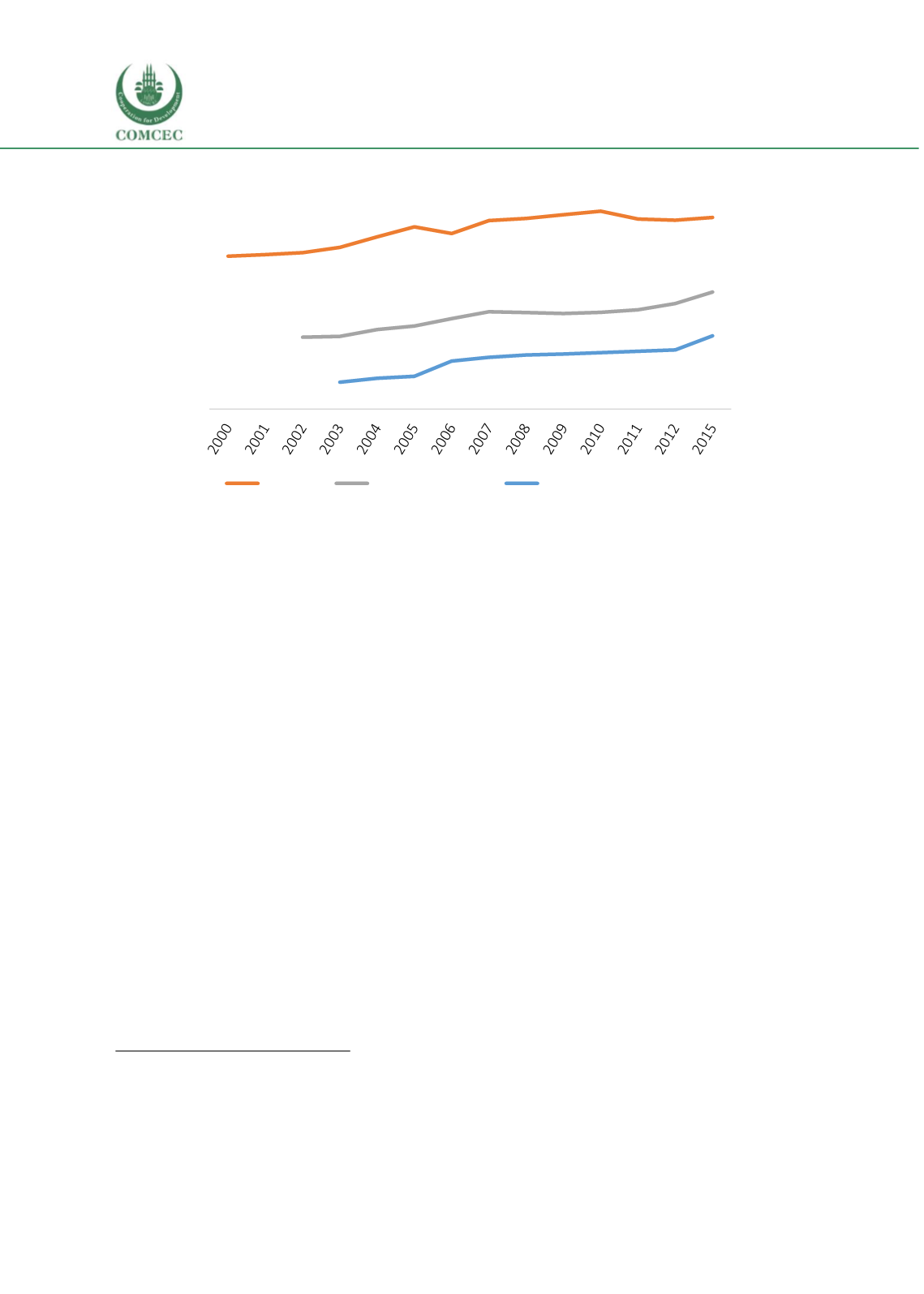

Education of Disadvantaged Children in OIC:
The Key to Escape from Poverty
158
Figure 56 Gross Enrolment Rates 2000-2015
Note: UNESCO Institute of Statistics
Determinants of Access to Schooling
Similar to other OIC countries and global trends, the disparities in access to education in
Pakistan are linked to household wealth, rural areas, geographical location, gender,
disability, language and being part of an ethnic minority.
A main difference is the sheer scale
of the challenge given the population size of Pakistan, its vast geography (including deserts and
high mountain ranges), the political challenges, and finally its frequent natural disasters that
affect entire divisions/districts and often disproportionately impact the poor.
Using DHS data, this
section will provide an overview of the main determinants of access to
education and how indicators and correlates have evolved between 1990 and 2012
421
.
Attendance and Completion Rates
422
:
Between 1990 and 2012, attendance rates for 6-11 year
olds improved by 36% or almost 20 percentage points from 54.6% to 74.5%. Attendance rates for
12-15 year olds also improved, although less significantly, with an increase of 20%. Completion
rates (finishing 5 and 8 years of education) increased by 32% and 47% respectively. Even with
this impressive increase, given how low the initial rates were in 1990, the completion rate of 8
years of schooling remains at 45.5 % in 2012, i.e
. less than 1 in 2 students aged 16-18 complete 8
years of schooling.
421
In order to be consistent with DHS 1990, Gilgit-Baltistan region has been dropped from the DHS 2012 and Islamabad in DHS
2012 is assumed to be part of the Punjab region.
422
Based on 1990 and 2012 DHS data analysis
0
10
20
30
40
50
60
70
80
90
100
Gross enrolment ratio (%)
Primary
Lower secondary
Upper secondary
















